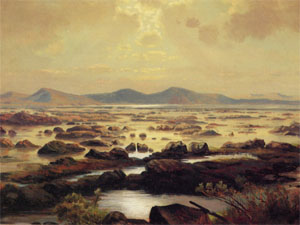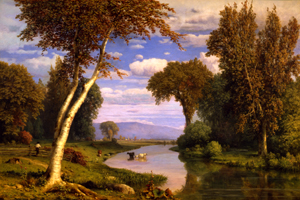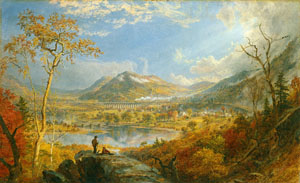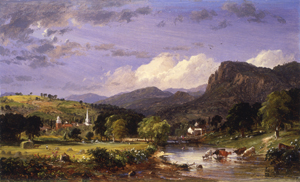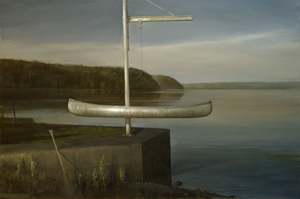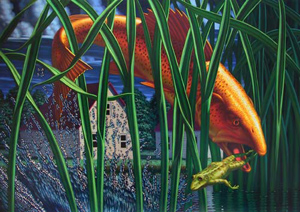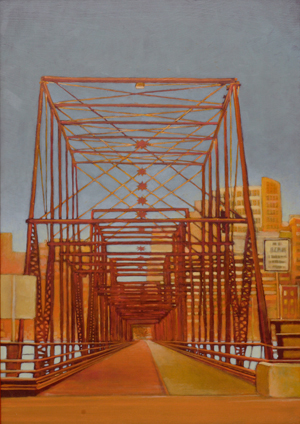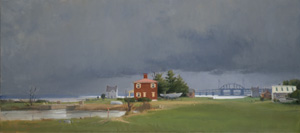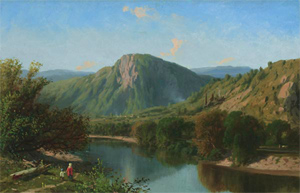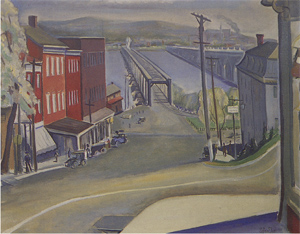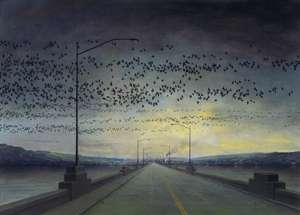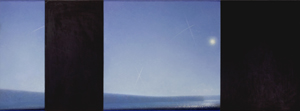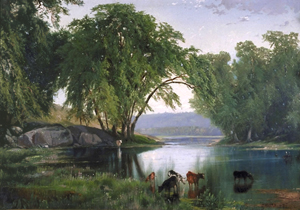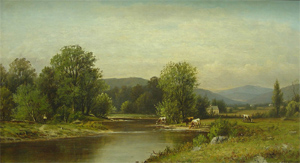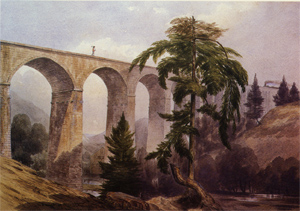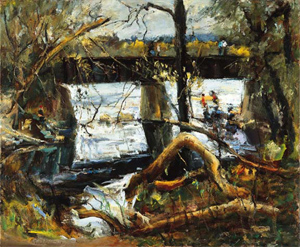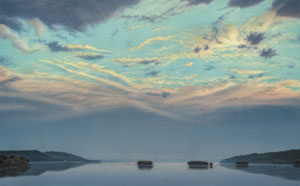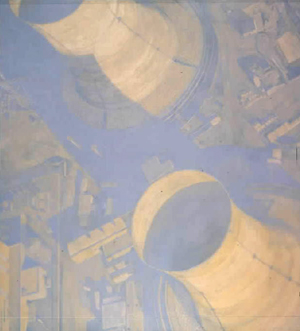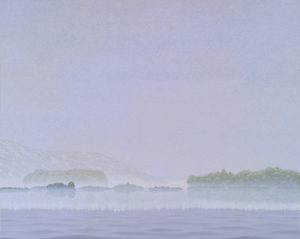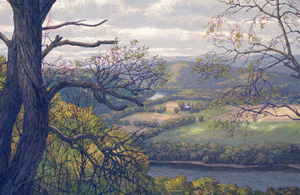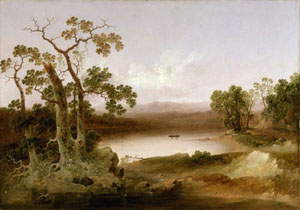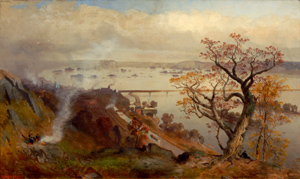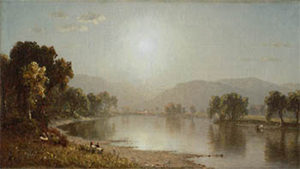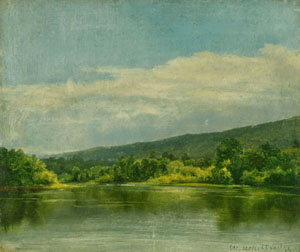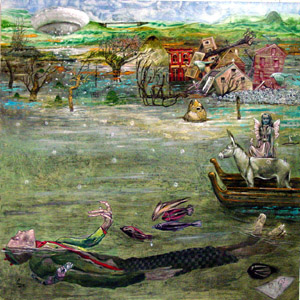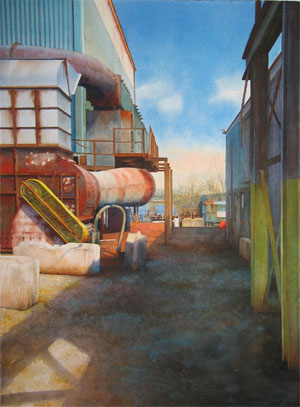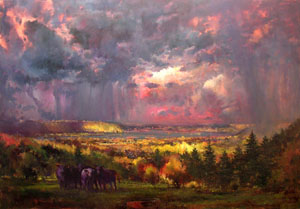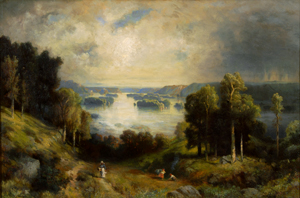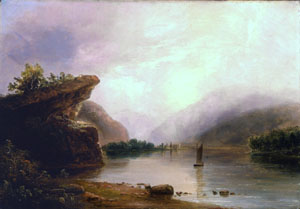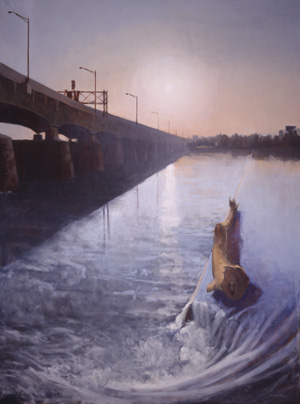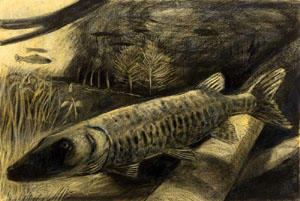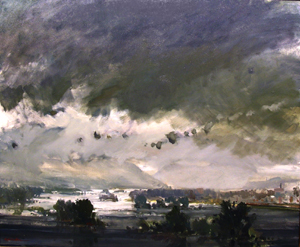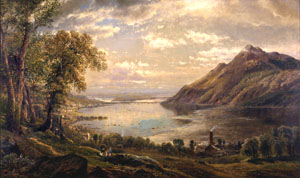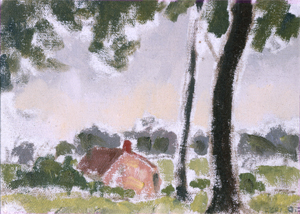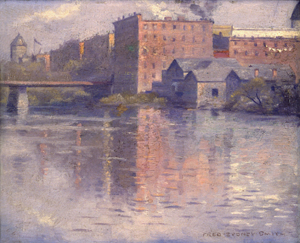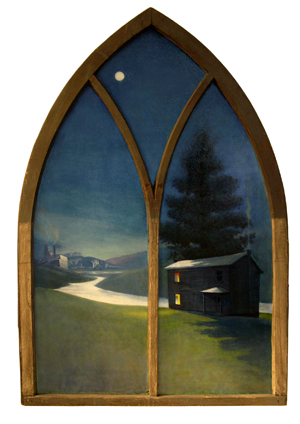|
|
|
|
aaaaa
|
|||||||||||||||||||||||||||||||||||||||||||||||||||||||||||||||||||||||||||||
|
|
Exhibition Tour Schedule: August 5 - September 10, 2006 Lancaster Museum of Art, Lancaster, PA
October 12 - December 31, 2006 Susquehanna Art Museum, Harrisburg, PA
January 15 – August 1, 2007 Governor’s Residence, Harrisburg, PA
September 9 – December 1, 2007 Washington County Museum of Fine Arts, Hagerstown, MD
December 16, 2007 –
February 20, 2008 York College Art Gallery, York, PA
May 15 –
August 30, 2008 Roberson
Museum and Science Center, Binghamton, NY
Catalog:
An 80 page soft-cover exhibition catalog has been published reproducing all the work in full color and featuring essays by David J. Dearinger, Susan Morse Hilles Curator of Paintings and Sculpture, Boston Athenaeum, and Leo G. Mazow, Curator of American Art, Palmer Museum of Art, The Pennsylvania State University.
The soft-cover catalog is available for sale in the retail shop on this site for $25 each.
Overview of the Exhibit: Comprised of approximately 40 major paintings spanning nearly 250 years, this exhibit included two groups of work. The first was a cross section of the many important images of the river created in the mid 18th century through the early 20th century, including works by such prominent American painters as Benjamin West, Jasper Francis Cropsey, Sanford Robinson Gifford, George Inness, Thomas Moran, Charles Demuth, Stephen Etnier and others. The other group consisted of paintings of or about the river by a group of nationally prominent contemporary artists (Mark Innerst, Leonard Koscianski, George Sorrels, Debra Bermingham, Randall Exon, Peter Paone, Raoul Middleman, Mark Workman, Rob Evans, Matthew Daub, and others), many of whom agreed to create works specifically for this exhibit. While linked by the common thread of the Susquehanna, the exhibit also examined the contrasting points of view between these two very different groups of work: the 18th and 19th century romantic view of the sublime landscape as a metaphor for America's promise versus the current postmodern role of the landscape as an open ended and often detached vehicle for presenting a multitude of perspectives and critiques on contemporary culture, investigating such issues as environmental decay, nuclear energy, and urban sprawl.
Catalog Essay: The Susquehanna: An Evolving Vision Rob Evans
Introductory essay from the catalog for Visions of the Susquehanna: 250 Years of Paintings by American Masters
We are soon approaching the four hundredth anniversary of John Smith’s first exploration, in 1608, of the lower reaches of the Susquehanna River. It seems fitting on this occasion to examine this extraordinary and influential river and honor it with perhaps its finest and most intimate portrait, an exhibition of paintings. Visions of the Susquehanna: 250 Years of Paintings by American Masters is a survey of the gradual transformation of this river and its watershed as seen in the landscapes created by the many prominent American artists who, over the last two and a half centuries, have gravitated there to paint it.
Flowing from its headwaters in the streams and lakes of upstate New York, then cutting and turning through the mountains and hills of central New York and Pennsylvania, where it is joined by its many tributaries (including the Juniata and Chenango rivers) and eventually to Maryland, where it widens into the head of the Chesapeake Bay, the Susquehanna River has long been an inspiration to artists.
While it is not as dramatically picturesque as the Hudson or Colorado rivers—which traverse deep mountainous gorges or thunderous waterfalls—the Susquehanna has had a quieter, more domestic allure. Its meandering course and fertile valleys have made it ideal for habitation, providing sanctuary and sustenance through the ages—first for tribes of Native Americans, who enjoyed and respected its pristine waters and, in recent centuries, for the progression of settlements, towns, and cities that took hold along its banks. As its level shores became major incubators for colonial inland settlements, the river valley eventually provided a prime corridor for transportation and commerce, connecting to the rich bounty of coal, timber, and farm produce upriver. Generations of artists have chronicled and interpreted the growing network of roads, highways, canals, bridges, and railroads that were built to link the river’s communities and that, over the years, have so profoundly changed the relationship between the river valley landscape and its inhabitants.
For all its historical triumphs, the Susquehanna has had its share of tragedies and notorious events, including great floods, the burning of the Wrightsville-Columbia Bridge in 1863 (a major turning point during the Civil War), and the near meltdown at the Three Mile Island nuclear power plant in 1979, to name just a few. And in a devastating current tragedy, the very network of factories, farms, industries, and power plants that gave the river its glory are what now threaten the magnificent Susquehanna: it has recently been placed at the top of the list of the nation’s most endangered rivers. Teeming with raw sewage, animal waste, and fertilizer runoff, the river is now at a critical crossroads.
The works in Visions of the Susquehanna attest to how so many artists, from the Romantic generation right up to the present, have interpreted this whole range of development as metaphors of progress and larger human concerns. Rivers have long been among the most potent metaphors in all forms of the arts—including literature, music, film, and painting. Across cultures and through all time, a river’s seemingly endless flow and diverse passages have suggested to artists and writers a philosophical or spiritual life journey. So, too, the Susquehanna has inspired artists to find universal themes in its passages—whether the waters are carefree, meandering, daunting, or unnavigable.
This survey examines the rich tapestry of Susquehanna iconography by arranging the works into two groups. The first is a cross section of the many important images of the river created from the mid-eighteenth century through the early twentieth century (some of these earlier works, due to availability and their fragile state, will only be on view at certain venues, and we reproduce here a few additional key works that were not available for the exhibit). The second group consists of paintings of or about the river by a cross section of nationally prominent contemporary artists, many of whom have agreed to create works specifically for this exhibit. While linked by the common thread of the Susquehanna, this survey also provides interesting contrasts between these two very different groups of work.
Using the actual riverbed as a canvas, the earliest visual artistic depictions of the river and its wildlife were no doubt the many extraordinary petroglyphs carved in the rocks by the Native American tribes who inhabited the river valleys long before the arrival of European explorers. In the eighteenth and early nineteenth centuries, as settlers pushed farther upriver, the Susquehanna was documented by explorer-artists who presented the river valley as the embodiment of the European vision of America—a place of lush, expansive, and dangerous wilderness; endless natural bounty; and limitless possibilities. In the following decades, thriving small villages and farms seemed to confirm this promise and artists depicted a romantic image of the river as provider and sustainer, a place where humanity and nature coexisted in harmony and prosperity. This idealized interpretation of the landscape peaked with the great works of such Hudson River School painters as Frederick Edwin Church, Louis Rémy Mignot, Thomas Moran, Sanford Robinson Gifford, and Jasper Francis Cropsey, all of whom painted the Susquehanna River in the mid-1800s. As the railroad pushed its way into the Susquehanna valley, bringing with it industry, logging, coal mining, and further development, this romanticized perception was soon replaced by nostalgia for a disappearing wilderness.
By the end of the nineteenth century, with the industrial era in full swing, artists such as Lloyd Mifflin, who continued to paint many romantic images of the Susquehanna well into the early twentieth century, soon found their work out of fashion as the seeds of European modernism took root in America. Abstract Expressionism and other modernist styles would dominate the American art scene for the next fifty years, creating an atmosphere hostile to almost any traditional form of pictorial representation. It’s not surprising that the early modernist painter Charles Demuth, who resided just a short distance from the Susquehanna, seems to have produced only one known image of the river, focusing his attention instead on the possibilities of the urban and industrial landscape as it related to new and innovative Precisionist forms of expression. Modernism and abstraction emphasized social and artistic progress and a fervor to dominate and “civilize” nature for profit, replacing the idea of our equilibrium with the grandeur of nature that marked the great nineteenth-century paintings of the river.
Not until the 1970s, arising out of the previous decade’s social revolution and revival of environmental awareness, did a new generation of young realist painters emerge who revived the art of landscape painting with a vigor that continues today. Influenced by the great Romantic landscape painters of the past (with their large formats, dramatic light, and sublime subject matter) and the bold compositions and brushwork of modernism, they expanded on the tradition through a wide and inventive variety of approaches to the subject. The Susquehanna becomes for these contemporary painters a vehicle for presenting a multitude of perspectives and commentaries on culture, ranging from simple reverence and lyrical narratives of nature to social criticisms of environmental decay, nuclear energy, and urban sprawl.
Rarely are we presented with such an opportunity to view a single subject through the eyes of so many extraordinary artists over such an extended period of time. This is perhaps best exemplified by the group of paintings in the exhibit depicting Wright’s Crossing (at Columbia and Wrightsville, Pennsylvania). We first glimpse this important crossing point on the river for east-west travelers, at near water level, as wild and untamed in Benjamin West’s 1767 portrayal, A View on the Susquehanna. In Lloyd Mifflin’s 1873 panoramic view, Susquehanna River Below Wrightsville, we see the network of canals, railroads, and iron furnaces that have sprung up along the river’s shores along with a single expansive covered bridge crossing the river. That bridge, destroyed by a hurricane in 1896, was replaced by two newer bridges and further development in the town of Wrightsville, which frames the view of the river in Stephen Etnier’s 1931 The Susquehanna River. Finally, in Matthew Daub’s 2006 painting, Foundry, depicting an operating iron foundry along the waterfront in Wrightsville, the river is barely visible through the foundry’s complex infrastructure of ducts and industrial framework. Civilization has gradually closed in on the river, which was so dominant in the first painting, but almost obscured in the last. In these four views we see summarized so eloquently the evolution of the river’s importance as our society and our consumptive needs continue to expand.
As this progression clearly portrays, the Susquehanna River valley represents a microcosm of the American experience at large: a vast wilderness of great natural abundance explored, settled, farmed, industrialized, and now threatened. Throughout this gradual progression, the artists of the day have expressed their personal take on this process, providing insight not only into the current mode of artistic thinking, but, in many cases, also reflecting the collective viewpoint of their society toward the landscape, revealing how this perception has changed with each generation. As we witness, through the eyes of the artists, this intimate portrait of the Susquehanna—from its headwaters to its mouth, whether from high above or below its waters, in all forms of seasonal and shifting light, in its many moods and manifestations, and through the gradual transformation along its shores brought about by the yearnings of its residents —we are reminded not only of its powerful and sublime beauty, but also of the urgent need to protect the delicate balance between the natural and civilized worlds that this magnificent river so potently represents.
This exhibit was funded by a major grant from the Richard C. von Hess Foundation and was listed with the Picture Pennsylvania Program of the PA Council on the Arts
Image credits from top:
Lloyd Mifflin, Rocks of the Susquehanna: Low Water,
1891, oil on canvas, 10 x 15 7/8 inches, collection of Dennis and Donna Splain.
George Inness, The Juniata River, 1856, oil on canvas, 36.4 x 54.4 inches, The Haggin Collection, The Haggin Museum, Stockton, California.
Jasper Francis
Cropsey, Starrucca Viaduct, 1865, oil on canvas, 22.4 x 36.4 inches, collection of the Toledo Museum of Art, Toledo, OH. Purchased
with funds from the Florence Scott Libbey Bequest in Memory of her Father, Maurice A. Scott.
Jasper Francis Cropsey, Chenango River, New York,
1858, oil on canvas, 10.4 x 16.9 inches, Memorial Art Gallery of the University of Rochester: Marion Stratton Gould Fund.
Benjamin West, A View on the Susquehanna,
1767, oil on canvas, 14 x
18 inches, collection of Winterthur Museum, Winterthur, DE. Gift of Mr. and Mrs. Daniel Fraad, Jr.
Randall Exon, Lift, 2006, oil on canvas, 24 x 36 inches, courtesy Hirschl &
Adler Modern Gallery, New York, NY.
Leonard Koscianski, Food Chain, 2003, oil on canvas, 46 x 66 inches, private collection, courtesy Mr. and Mrs. Steve Stremmel, Reno, Nevada.
Mark Innerst, Old Shakey, 2006, oil on panel, 32 x 24 inches, courtesy of the artist.
Jeffrey Reed, Havre de Grace, 2006, oil on canvas, 12 x 27 inches, courtesy Gross McCleaf Gallery, Philadelphia, PA.
George Lafayette Clough, Coal Mine on the Susquehanna, c.1875, oil on board, 11.75 x 18.5 inches, collection of Gib and Patti Veconi.
Stephen Etnier, Susquehanna River, 1931, oil on canvas, 28 x 36.1 inches, Mr. and Mrs. Frank Auspitz Collection.
Rob Evans, Migration, 1997, mixed media, 20 x 27.75 inches, collection of George and Bambi Long.
Debra Bermingham, Sunlight on the Susquehanna, 2006, oil on panel, 25 x 68.5 inches (four panels), courtesy DC Moore Gallery, NYC.
Thomas Moran, On the Catawissa Creek, 1862, oil on canvas, 14 x 20.25 inches, University of Virginia Art Museum, Gift of Gil Michaels, 2002.5.
Charles Wilson Knapp, Cows Watering Along the Susquehanna, c.1860-70, oil on canvas, 16 x 28 inches, collection of Lebanon Valley College, Jeff-Pete Art Acquisition Fund.
William McIlvaine, Viaduct of Starrucca, 1851, watercolor, 9.5 x 13.75 inches, collection of Roberson Museum and Science Center.
Henry Wolcott Boss, View of Binghamton From the Inebriate Asylum, 1870-78, oil on canvas, 12 x 20 inches, Roberson Museum and Science Center, Binghamton, NY.
Raoul Middleman, The Old Railroad Bridge at Deer Creek, 1997, oil on canvas, 30 x 36 inches, courtesy C. Grimaldis Gallery, Baltimore, MD. Mark Workman, Down River, 2006, acrylic
on paper, 28 x 45 inches, courtesy Bernarducci.Meisel Gallery, NYC.
Paul Caranicas, Energy Sources 4: Three Mile Island - 2000, 1993, oil on
linen, 66 x 60 inches, courtesy Bernarducci.Meisel Gallery, NYC.
George Sorrels, Susquehanna Shroud,
2006, oil on linen, 32 x 40 inches, courtesy Gerald Peters Gallery, NYC.
Thomas Paquette, Marie Antoinette Overlook, 2006 , oil on canvas, 30
x 46 inches, courtesy the artist.
Joshua Shaw, View of the Susquehanna, 1839, oil on canvas, 19 x 27 1/6
inches, Courtesy of Questroyal Fine Art, LLC, NYC.
Lloyd Mifflin, Susquehanna River Below Wrightsville,
1873, oil on canvas, 14 x 23 inches, The State Museum of Pennsylvania, PHMC, Gift of Dr. C. Huston Mifflin
66.66.1. Sanford Robinson Gifford, An October Afternoon on the Juniata River,
1879, oil on canvas, 9 x 16 inches, The Grey Collection.
Thomas Worthington Whittredge, The Susquehanna, n.d., oil on paper
mounted on board,10
x 12 inches, collection of Bruce Gimelson and Sandra Thayer, Garrison, NY.
Peter
Paone, Agnes Susquehanna - Born 1972, 2006, acrylic on MDF board, 40 x 40 inches, courtesy the artist.
Matthew
Daub, Foundry, 2006, watercolor, 30 x 22 inches, private collection.
Robert
Andriulli, Susquehanna Expulsion, 2002, oil on linen, 50 x 72 inches, courtesy the artist and Lancaster
Galleries, Lancaster, PA.
Lloyd
Mifflin, The Susquehanna River from the Hills (Columbia, Pennsylvania), 1913, oil
on canvas, 20 x 30 inches, The State Museum of Pennsylvania, PHMC, Gift of Dr. C. Huston Mifflin 31.2.4.
Thomas Doughty,
Susquehanna River, 18(?), oil on canvas, 14 x 19.75 inches, collection of the Maryland Commission on Artistic Property,
Maryland State Archives, MSA SC 4680-10-0021.
Michael Allen, Fallen Tree on the Susquehanna, 2006, oil on canvas, 48
x 36 inches, courtesy the artist.
Robert Patierno, Musky, mixed media, 2005, 30 x 44 inches, private collection.
John David Wissler, Bright Downpour, 2001, oil on canvas, 24 x 32 inches,
courtesy the artist and Lancaster Galleries, Lancaster, PA.
David
Brumbach, View of the Susquehanna from the Haversticks, 1978, watercolor, 11.75 x 38 inches, collection
of Barbara and Scott Haverstick.
Edmund
Darch Lewis, The Susquehanna at Duncannon, 1872, oil on canvas, 35 x 59 inches, The Trout Gallery, Dickinson
College, Carlisle, Pennsylvania.
Fred Sydney Smith, Binghamton on the Chenango,
c. 1920, oil on canvas, 8.25 x 10.25 inches, Roberson Museum and Science Center, Binghamton, NY.
Charles Demuth, Landscape, Peach Bottom, 1931, oil on canvas, 6.75 x 9.25 inches, collection
of the Demuth Museum, Gift of Charles Conrad. Mary
Veronica Sweeney (b.1957), I Saw the Ball of Life Going Down the Susquehanna,
2006, oil on canvas, 61 x 41 inches, courtesy the artist.
|
||||||||||||||||||||||||||||||||||||||||||||||||||||||||||||||||||||||||||||
|
|
|||||||||||||||||||||||||||||||||||||||||||||||||||||||||||||||||||||||||||||

